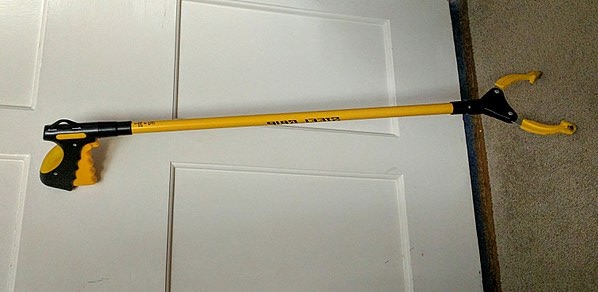The BBC News article Apollo in 50 numbers: Weights and Measures shows the following photo with the caption:
The astronauts brought back more than 360kg (790lb) of Moon rocks for study on Earth (Credit: Nasa)
I'm guessing that this is some kind of reach-extender to allow the astronaut to pick up rocks without needing to bend over and use their hands.
Question: How exactly does this Apollo astronaut's tool work? What was it called? The angle of the graspers looks like they would not extend around the rock to be picked up, unlike the rigid fingers shown in the second image of a modern "reach extender". How do these grasp rocks effectively? Was there a maximum size or mass they could be used on?
Cropped NASA photo:

Reach extender (rotated, flipped, from here):

